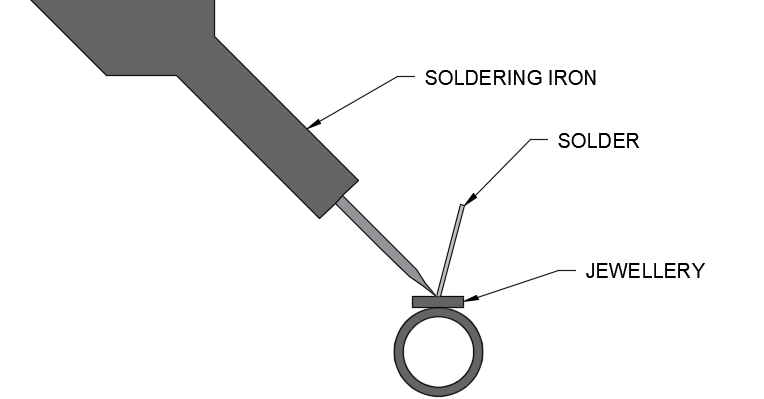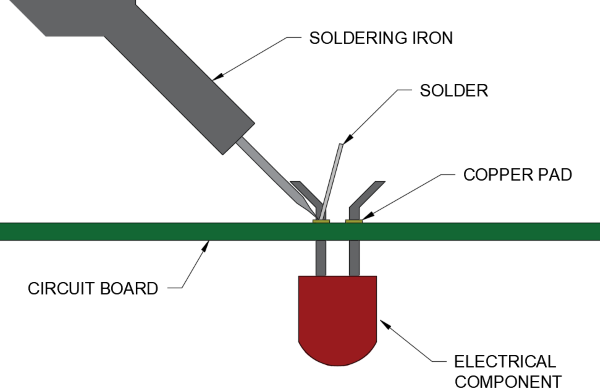
Joining Techniques
The following page of notes will cover:
- Adhesives
- Mechanical
- Heat
- Jointing
Adhesives
Contact adhesive:
| Advantages | Disadvantages |
|---|---|
|
|
Uses: Applying formica and veneers
Tensol cement:
| Advantages | Disadvantages |
|---|---|
|
|
Uses: Applying formica, veneers
Epoxy resin:
| Advantages | Disadvantages |
|---|---|
|
|
Uses: Aircraft, boats, golf clubs, skis
Polyvinyl acetate (PVA):
| Advantages | Disadvantages |
|---|---|
|
|
Uses: Wood joints, card making, fabrics joining
Hot melt glue (glue gun):
| Advantages | Disadvantages |
|---|---|
|
|
Uses: Model making, model designs
Cyanoacrylate (superglue):
| Advantages | Disadvantages |
|---|---|
|
|
Uses: Seal cuts, temporary fixes to damages, stopping runs in nylon
Polystyrene cement:
| Advantages | Disadvantages |
|---|---|
|
|
Uses: Airfix models, joining polystyrene
Mechanical
Screws:
| Advantages | Disadvantages |
|---|---|
|
|
Uses: Bedroom furniture
Nuts:
| Advantages | Disadvantages |
|---|---|
|
|
Uses: Engineering situations where joints need to be undone
Bolts:
| Advantages | Disadvantages |
|---|---|
|
|
Uses: Engineering situations where joints need to be undone
Washers:
| Advantages | Disadvantages |
|---|---|
|
|
Rivets:
| Advantages | Disadvantages |
|---|---|
|
|
Uses: Sheet metal joining, boat hulls
Press:
| Advantages | Disadvantages |
|---|---|
|
|
Uses: Pattern making on metals
Heat
Oxy acetylene welding:

How it works:
- Used to weld low carbon steel
- The metal is prepared by creating a v shaped joint between to two metals
- An oxygen and acetylene blow torch then heats the area
- This creates a melt pool, this melt pool mixed with a steel filler rod creates the welded joint
| Advantages | Disadvantages |
|---|---|
|
|
Uses: General engineering
MIG welding:

How it works:
- Used to weld thin metals
- MIG welding uses an electric arc to create heat
- Carbon dioxide/argon is used to form a flux shield to protect the weld area from oxidation
- Then an electrode wire (of the same material) is melted to fill the gap for the weld
| Advantages | Disadvantages |
|---|---|
|
|
Uses: Cars, bike frames, metal barriers
Brazing:

How it works:
- The two materials being joined are cleaned before welding
- Then the two materials are held together using a former
- Flux is applied to prevent the join area from oxidation
- A welding torch then heat the join area and a brazing rod is used to fill the joint area
| Advantages | Disadvantages |
|---|---|
|
|
Uses: General engineering, bicycle frame
Hard soldering:

How it works:
- The two metals being joined is cleaned
- Then the two materials are held together using a former
- The metal is then heated up to the same temperature as the melting point of the solder
- The solder is then applied to the joint area
| Advantages | Disadvantages |
|---|---|
|
|
Uses: Jewellery, ornaments, silverware, model engines
Soft soldering:

How it works:
- The two metals being joined is cleaned
- Then the two materials are held together using a former
- The metal is then heated up to the same temperature as the melting point of the solder
- The solder is then applied to the joint area
| Advantages | Disadvantages |
|---|---|
|
|
Uses: Electronics
Jointing
Traditional wood joints:
Dovetail joint:
| Advantages | Disadvantages |
|---|---|
|
|
Uses: Drawers, office tables
Comb joint:
| Advantages | Disadvantages |
|---|---|
|
|
Uses: Box construction, small scale projects
Housing joint:
| Advantages | Disadvantages |
|---|---|
|
|
Uses: Framework construction, cabinets, shelving
Half lap joint:
| Advantages | Disadvantages |
|---|---|
|
|
Uses: Simple frames or boxes
Dowel joint:
| Advantages | Disadvantages |
|---|---|
|
|
Uses: Flat pack furniture, bookcases, wardrobes, Ikea furniture
Mortise and Tenon joint:
| Advantages | Disadvantages |
|---|---|
|
|